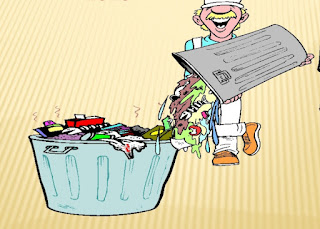MS-PowerPoint
MS–PowerPoint
Description also available in video format (attached below), use your desktop for better experience.
Introduction
· It is a program
that includes Microsoft Office suites.
· It is
presentation based program that uses the videos, graphics, sounds & music
to make a presentation more attractive.
· This program is used to make presentations for various purposes.
·
Presentation styles refer to the way information
is visually communicated in a PowerPoint presentation.
A. Informative Style
- Focus:
Factual data, statistics, and information.
- Example:
Research presentations, business reports.
B. Persuasive Style
- Aim:
To convince or influence the audience.
- Example:
Marketing pitch, campaign presentation.
C. Instructional Style
- Focus:
Teaching or training content step-by-step.
- Example:
Educational tutorials, workshop materials.
D. Motivational Style
- Aim:
Inspire or encourage audience.
- Example:
Leadership talks, goal-setting presentations.
E. Visual/Graphical Style
- Heavy
use of images, infographics, and charts.
- Minimal
text.
- Suitable
for creative fields, design proposals.
Slide Insertion & Editing
A. Inserting Slides
- Home
tab → New Slide:
- Choose
from predefined layouts (Title Slide, Title & Content, Two Content,
etc.)
- Right-click
in Slide Pane → New Slide.
B. Duplicating Slides
- Right-click
slide → Duplicate Slide.
C. Deleting Slides
- Right-click
→ Delete Slide.
D. Changing Layout
- Select
slide → Home tab → Layout → Choose new layout.
E. Editing Content
- Click
text box or object to edit.
- You
can change:
- Font
type, size, color
- Alignment
and bullet styles
- Images,
charts, and SmartArt
F. Slide Design
- Design
tab → Choose Theme and Variants.
Menus in MS PowerPoint
A. File Menu
- Save,
Open, Close, Print, Share, Export, Options.
B. Home Menu
- Clipboard:
Cut, Copy, Paste
- Slides:
New Slide, Layout, Reset
- Font:
Style, Size, Color
- Paragraph:
Bullets, Alignments
- Drawing
tools
C. Insert Menu
- Tables,
Pictures, Shapes, Icons, Text Boxes
- Charts,
SmartArt, Audio/Video
D. Design Menu
- Themes,
Variants, Slide Size, Background Styles
E. Transitions Menu
- Apply
transitions between slides
- Set
transition effects and timing
F. Animations Menu
- Animate
objects on slides
- Add
entrance, emphasis, exit, and motion path effects
G. Slide Show Menu
- Start
Presentation (From Beginning/Current Slide)
- Set
Up Slide Show, Rehearse Timings, Record Slide Show
H. Review Menu
- Spelling,
Thesaurus, Comments, Compare
I. View Menu
- Normal,
Slide Sorter, Reading View, Master Views
- Zoom,
Gridlines, Guides
Slide Sorter View
·
Used for organizing and managing slides.
Features:
- View
all slides as thumbnails.
- Easily
rearrange slide order by drag and drop.
- Delete
or duplicate multiple slides.
- Access
through: View tab → Slide Sorter
Slideshow
A. Starting Slideshow
- F5:
Starts from beginning.
- Shift
+ F5: Starts from current slide.
- Slide
Show tab → From Beginning / From Current Slide
B. Slideshow Options
- Use
presenter view (notes visible to presenter only).
- Navigate
using arrows, spacebar, mouse click.
C. Rehearse Timings
- Set
how long each slide appears during automated presentations.
D. Custom Slide Show
Animation
A. Types of Animations
- Entrance
– Object appears (e.g., Fly In, Fade).
- Emphasis
– Object highlighted (e.g., Spin, Grow).
- Exit
– Object disappears (e.g., Fade Out, Fly Out).
- Motion
Paths – Object moves along a path (e.g., Arc, Line).
B. Applying Animation
- Select
object → Animations tab → Choose effect.
- Use
Animation Pane for managing multiple animations.
C. Advanced Animation Tools
- Add
Animation: To apply multiple effects on one
object.
- Animation
Pane: Shows sequence and timing.
- Trigger:
Animation starts on click of specific object.
- Timing:
- Start:
On Click, With Previous, After Previous
- Duration
and Delay options
Tips for Effective PowerPoint
Presentations
- Use
consistent fonts and colors.
- Keep
text minimal – focus on key points.
- Use
high-quality visuals (charts, photos).
- Maintain
slide-to-slide consistency.
- Avoid
too many transitions or animations.
- Use
speaker notes for additional details.
Video Description
o Visit our Let’s contribute page https://keedainformation.blogspot.com/p/lets-contribute.html
o Follow our page
o Like & comment on our post
.




Comments